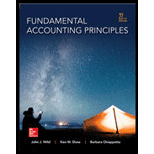
Concept Introduction:
Accounting for recognition of receivables in IFRS and U.S GAAP
Accounting for recognition of receivables in IFRS:
IFRS recognize receivables using the realization principle and an earnings process since receivables are arising from the revenue generating activity. In IFRS, the arm’s length principle is not followed as it is followed in the US GAAP for realization principle. Rather, in IFRS, this notion is applied in terms of reliable measurement and probability of economic benefits.
Accounting for recognition of receivables in US GAAP:
US GAAP uses the same asset criteria as IFRS. The realization principle as per US GAAP implies an arm’s length transaction occurs. This is how, the recognition of receivables is done under US GAAP.
Accounting for valuation of receivables in IFRS and U.S GAAP
Accounting for valuation of receivables in IFRS:
IFRS requires companies to report receivables net of estimated uncollectible allowances. Only allowance method will be needed for uncollectible account. The allowance method can use the following methods to estimate uncollectible accounts –
• Percent of receivables
• Percent of sales
• Aging method
Accounting for valuation of receivables in US GAAP:
Same like IFRS, US GAAP requires companies to report receivables net of estimated uncollectible allowances. Only allowance method will be needed for uncollectible account. The allowance method can use the following methods to estimate uncollectible accounts –
• Percent of receivables
• Percent of sales
• Aging method
Requirement 1
To explain:
How the accounting for recognition of receivables is different between IFRS and US GAAP.
Requirement 2
To explain:
How the accounting for valuation of receivables is different between IFRS and US GAAP
Want to see the full answer?
Check out a sample textbook solution
Chapter 9 Solutions
Fundamental Accounting Principles -Hardcover
- I need help finding the accurate solution to this general accounting problem with valid methods.arrow_forwardCan you solve this general accounting problem with appropriate steps and explanations?arrow_forwardI am trying to find the accurate solution to this financial accounting problem with the correct explanation.arrow_forward
- Can you solve this general accounting question with accurate accounting calculations?arrow_forwardPlease provide the accurate answer to this general accounting problem using appropriate methods.arrow_forwardCould you help me solve this financial accounting question using appropriate calculation techniques?arrow_forward
- Can you solve this general accounting question with accurate accounting calculations?arrow_forwardTaron Productions has the following information from its process costing system: beginning work-in-process of 4,800 units (60% complete for conversion costs), 22,500 units started during the period, and ending work-in-process of 3,900 units (40% complete for conversion costs). Using the weighted average method, what are the equivalent units for conversion costs for the period?arrow_forwardCompute the equivalent units of productionarrow_forward

 AccountingAccountingISBN:9781337272094Author:WARREN, Carl S., Reeve, James M., Duchac, Jonathan E.Publisher:Cengage Learning,
AccountingAccountingISBN:9781337272094Author:WARREN, Carl S., Reeve, James M., Duchac, Jonathan E.Publisher:Cengage Learning, Accounting Information SystemsAccountingISBN:9781337619202Author:Hall, James A.Publisher:Cengage Learning,
Accounting Information SystemsAccountingISBN:9781337619202Author:Hall, James A.Publisher:Cengage Learning, Horngren's Cost Accounting: A Managerial Emphasis...AccountingISBN:9780134475585Author:Srikant M. Datar, Madhav V. RajanPublisher:PEARSON
Horngren's Cost Accounting: A Managerial Emphasis...AccountingISBN:9780134475585Author:Srikant M. Datar, Madhav V. RajanPublisher:PEARSON Intermediate AccountingAccountingISBN:9781259722660Author:J. David Spiceland, Mark W. Nelson, Wayne M ThomasPublisher:McGraw-Hill Education
Intermediate AccountingAccountingISBN:9781259722660Author:J. David Spiceland, Mark W. Nelson, Wayne M ThomasPublisher:McGraw-Hill Education Financial and Managerial AccountingAccountingISBN:9781259726705Author:John J Wild, Ken W. Shaw, Barbara Chiappetta Fundamental Accounting PrinciplesPublisher:McGraw-Hill Education
Financial and Managerial AccountingAccountingISBN:9781259726705Author:John J Wild, Ken W. Shaw, Barbara Chiappetta Fundamental Accounting PrinciplesPublisher:McGraw-Hill Education





